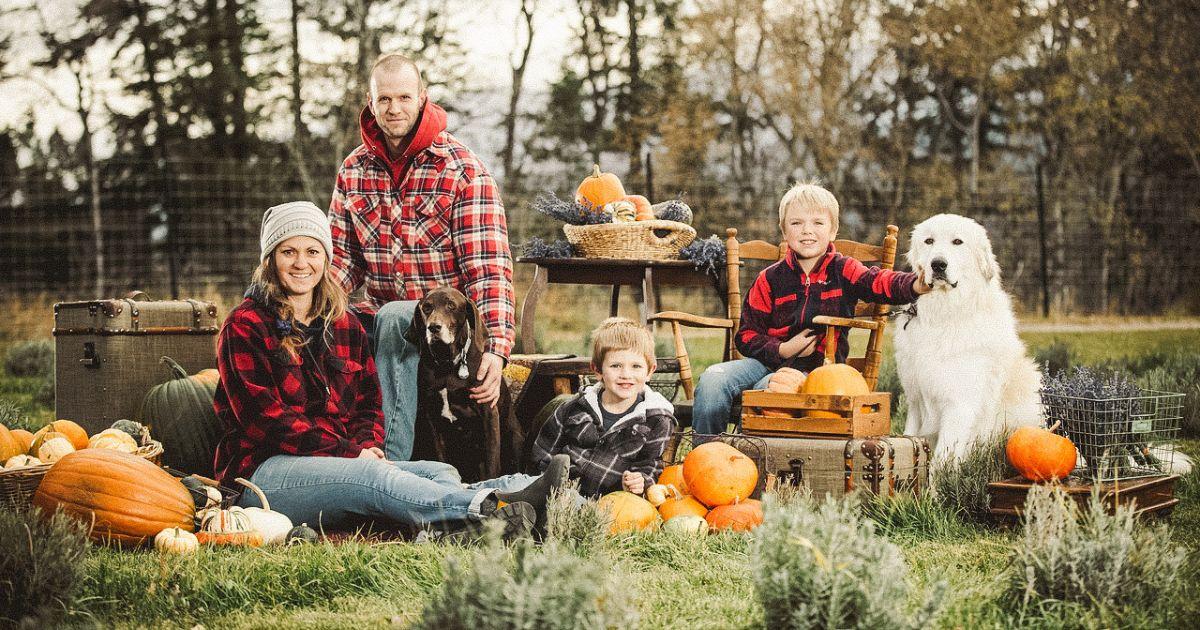Lavender fields are a joy to behold. Purple and green under the golden sun, they inspire artists around the world, and throughout time. Canada is lucky to have many such views spread across our great land, but these crops also come with their share of hard work and turmoil. And with 2020 being an unusual year due to the pandemic, each of the Canadian lavender farmers we talked to have had to adapt in new ways to grow and share their farms and products.

“As we all know, 2020 was a hard year for everyone,” says Kate Murphy of Columbia Valley Lavender Farm in British Columbia. “In our first couple of seasons, our wedding clients purchased 90 percent of our lavender. Our brides would use the lavender for bridal bouquets and bridesmaids’ bouquets, boutonnieres, centrepiece arrangements, and dried buds to throw (instead of rice) at the end of their ceremony. However, last season, with COVID-related restrictions, we had every wedding party cancel their orders. This left us with a lot of lavender to try and sell.

“We decided that we would try and bring people to the farm to enjoy the whole experience. We offered yoga classes and photography sessions out in the lavender field so everyone could enjoy the magic of what we do here. Our barn was converted into a little farm store where customers stopping in could walk around the field, take pictures and also purchase lavender products made on site by us. Not only could we offer more variety and extend our season, but we also found that locals and tourists alike want to support local growers. Choosing fresh, locally grown, handmade products offers the highest quality and is the most environmentally sustainable option. 2020 turned out to be our biggest challenge but also the best surprise for us.”
Climate change and local seasonal patterns have also impacted lavender farms. “Over the past 5 years, climate change has struck our lovely Charlevoix region, northeast of Quebec City,” says Louise Vidricaire of Azulée Organic Lavender Farm in Charlevoix, Quebec. “I’ve noted that the spring arrives later than before, meaning the ground stays colder longer, the sun is less intense, and there is simply no rain. It’s almost like we’ve lost the spring entirely.”

As Vidricaire explains: “One fine day in early June, we go from 10ºC to 25ºC. Serious heat waves strike in July, bringing heavy humidity and temperatures that range anywhere from 30ºC to 39ºC plus the humidex factor. In August, still hoping for rain, we’ve experienced destructive storms accompanied by very high winds. And as summer turns into fall, the sun stays much warmer throughout September. Fall and winter also bring their own type of mayhem to our region, known for its 6-metre snowfalls. The ground freezes in November, then thaws again in December with warmer-than-seasonal temperatures that are treacherous for lavender growers.”

At the other side of the country, in the B.C. Interior, the Okanagan Valley Lavender & Herb Farm’s founder, Andrea McFadden, shares how weather has impacted her growing season. “We learned early on that our lavender plantings are impacted by zone and climate as much as any other plant,” she says. “In particular, winter wind has been devastating in the years when we do not have snow. For example, in 2009 we lost our entire lower block in a year of cold temperatures and no snow cover.”

Another struggle McFadden has had to face in the Okanagan Valley are wildfires, which can present a problem during the summer months. “We live in a region plagued by wildfires and have found our operation severely impacted by them several times since 2003. The fires of 2017 nearly crippled our operation,” she says.



“We also realized that we had to invest in our online store and shouldn’t depend upon visitor traffic to the farm,” she adds. “When it became apparent that COVID-19 was with us for the long term, we invested in our online store and built a page that would allow people to experience a bit of the farm, even though they couldn’t visit us in person.”


Ian Baird at Terre Bleu Lavender Farm in Ontario shares that they, too, have focused on their online space. “It has grown very significantly for us,” he says.



Versatility has been the key to success in a challenging year. Being able to learn, adapt and try new things has helped business owners like these in facing challenges and turning those occasions into successes. “As a business owner, you need to stay agile at all times and land on your feet running every morning,” Vidricaire shares. “COVID-19 initially surprised us, but we embraced its restrictions by creating self-guided tours that visitors seem to love.”



Versatility comes in other forms as well. Trish Tymstra of P.E.I.’s Island Lavender Distillery is excited about her upcoming new products. “One day, we would love to expand our product line to include culinary lavender jams and jellies,” she says. “Our upcoming sweet and savory lavender recipe cookbook shares dishes like Blueberry Lavender Foldovers and Cream Puffs filled with Lavender Chocolate Mousse and Cinnamon Cream. Nothing could be sweeter!”



At Terre Bleu Lavender Farm, Baird is looking to new partnerships and product lines. “The opportunities have been incredible,” he says. “We have partnered with a university in the area to produce sparkling water and have worked with landscape architect students who have incredible ideas such as building a hops structure (also called a sky window). It is neat to see the different designs that landscape architect students, artists and others bring. We have really tried to diversify our business, which has led to sustainability from an economic perspective.”


Whether faced with challenges and struggles, or successes and opportunities, Canadian lavender farms are proving to be resilient and resourceful. These attributes — paired with a passion for growing lavender and a desire to share the journey with customers and visitors — are ensuring a continued interest and success for lavender farms now and into the future.

As Tymstra says: “2020, the year of COVID-19, brought its challenges. However, locals and Canadians from across the country have been extremely supportive, and we are very thankful to them all!”



Attached are photos of the Okanagan Lavender Farm.
Photo credit belongs to: Abigail Eveline Photography – hello@abigailevelinephotography.com
Barbori Garnet is a Creative Arts Professional - writer, artist, musician, and gardener - based in Calgary, AB. She enjoys writing non-fiction and writes on remote work, home offices, gardening, and more. Visit Barbori at barborigarnet.com or follow her on Facebook and Twitter at @BarboriGarnet.














